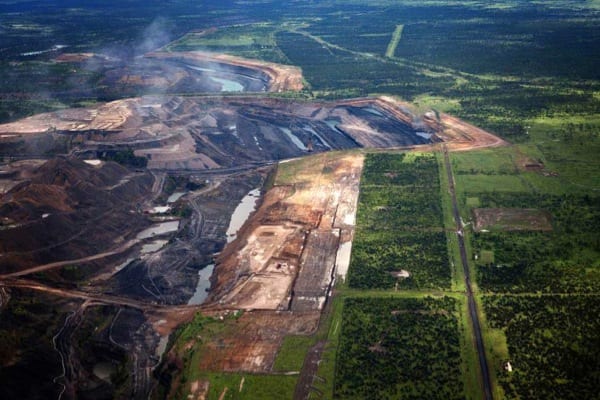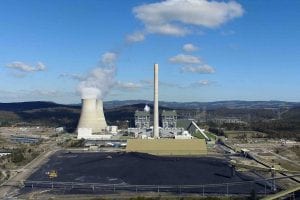This is going to require some data. There’s an excellent Australian study on Indian coal usage to start, Coal in India 2015. Let’s get some information from there.
First off, India has the fifth largest coal reserves by country, but there are three challenges. The first is that experts question the accessibility of those reserves and the second, the second is that the majority of it is located in the east far from where it is needed.
More pertinent for this conversation is the third challenge, that the coal is inferior. On this scale, domestic Indian coal is typically in the E or F categories.
Perhaps more pertinent, the majority of Indian plants are sub-critical plants which produce more CO2 per KWH. The Indian fleet average in 2015 was 1,100 grams per KWH, while the best plants were achieving 750 grams per KWH.
These latter supercritical plants typically use imported coal to blend with the local coal to achieve better generation results. From 2017 per the report, new Indian coal plants are required to be supercritical, but the government is also aiming to stop all thermal coal imports. The quality of coal imports has increased substantially over the past few years with low quality imports dropping and high quality imports increasing. However, more recently the government has announced that it will stop building new coal plants entirely as it pivots away from coal.
So we have three moving pieces to the equation: number of coal plants, amount of imports and ratio of supercritical to non-supercritical coal plants.
But there’s another question: what is the quality of Adani coal? In general the Galilee Basin coal is higher quality than India’s.
However, Adani has admitted in court that their coal isn’t the best in the basin.
The average energy content of coal at Adani’s planned mine is about 18 per cent below benchmark Australian coal.
Adani conceded in court the ash content was about 26 per cent, roughly double the Australian benchmark.
The ratio indicates that it’s still superior to average, unwashed Indian coal. But India, in addition to putting importing a smaller amount of higher quality coal, has also been embarking on a process of improving the quality of its domestic coal through washing. This removes ash, stones and other non-combustible material, effectively upgrading to a higher quality product.
There’s another major point to make. Investment in renewables in India in eight months of 2015 was over $100 billion USD, part of an accelerating trend. Look at these 2015 projections from the IEEFA.
If we project out, what is likely to occur in India is the same thing which has occurred in China and the USA.
- The worst plants will simply be closed.
- Only supercritical plants will be built.
- Remaining plants will likely be upgraded.
- Coal washing and related quality management processes will likely achieve a significant improvement.
- The ongoing commitment and major investment in renewables will shoulder more of the burden for new generation.
- Over time, capacity factor of coal plants will diminish just as is happening in the USA today.
The above will substantially weaken import demands as lower amounts of coal will be required.
India’s emissions per KWH will drop to 750 grams CO2e. As of December 2015, they had about 171 GW of coal capacity. It likely operates with a capacity factor average of 60%, which is normal globally at this point. Here’s a rough table of a potential shift in emissions for India based on this projection I whipped up based on these assumptions.
Will Adani coal help in this mix? Maybe a bit. Given that the Adani Carmichael mine doesn’t exist yet, with work on its construction expected in late 2017, it might shift a few tons of good coal to India before India shuts down imports entirely. What percentage is an interesting calculation as the models run by Adani are undoubtedly optimistic for them and ignore the Indian shift to renewables. Let’s give it a generous 1% of 2035 emissions reductions. 99% of reductions will be based on improved technology, better India coal quality management and renewables.
As I look at the data available, I see Adani being completely out-to-lunch in their assertion that there is a market of any type for Australian coal in India in the coming years. Technological upgrades, shutting bad coal plants, completing the supercritical plants and building an awful lot of renewables is much more sensible.
Especially with this kicker.
In an interview to Business Standard, Tulsi Tanti, chairman and managing director, Suzlon, said, “India will be a large hub for wind manufacturing in five years on the strength of its domestic demand. It will be like China that has a 20 Gw domestic solar market and, therefore, promoted manufacturing in their country. Now, the global market is dominated by four Chinese companies.”
One of the largest wind energy companies in the world is in India. Just as China dominates solar, India wants to dominate wind.
So, my net on how much Adani coal could help? Well, it would help a bit in the crappy plants, but it wouldn’t be used there instead being mixed with India coal to improve performance in supercritical plants. And those plants will be receiving the lion’s share of focusing on improved quality of domestic coal.
I could probably work out the fantasy world CO2 emissions specific to Adani coal vs Indian coal, but it would be contrary to all of the evidence that Adani coal is not going to get major, long-lasting coal contracts. It will probably end up bankrupt like Peabody instead.











